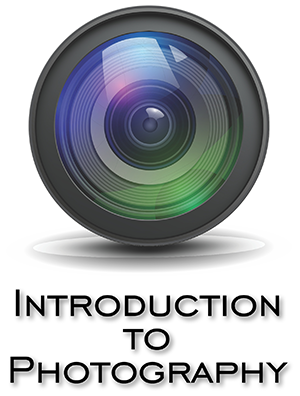
Exposure
Images and text by Paul Illsley

Exposure is simply controlling the amount of light that reaches your camera’s sensor in order to record the image you want. There are three components of exposure; ISO, aperture and shutter speed.

ISO (International Standards Organization) this is a value given to the camera's sensor indicating how sensitive it is to light. The base ISO value is 100 and any number above this value indicates it needs less light to record a similar image. Every time you double the ISO value you require ˝ the light to record an image. So, if I am recording an image at ISO 100 and I shift the setting in the camera to 200, I will only need ˝ the light to record the second image. Increasing the ISO setting in the camera does come at a cost; the higher the ISO setting the more “noisy” (decrease in fine detail) your image will appear. Fortunately modern cameras are able to compensate for this noise and deliver good results even at higher ISO settings.

Aperture: This is a mechanism inside the lens that opens and closes in order to regulate the amount of light being transmitted through the lens. The larger the hole, the greater the amount of light reaches the sensor. Aperture values are referred to as F numbers (Fraction number). The smaller the F number, the more light it lets through. The F number is determined by taking the focal length of the lens and dividing it by the size of the opening. So, if I have a 100mm lens and an opening of 25mm, the F number will be 4 (100 / 25 = 4). Common F numbers are: 1, 1.4, 2, 2.8, 4, 5.6, 8, 11, 16, 22, 32, 45 and 64. As with ISO settings, each F number you move either doubles or halves the light hitting the sensor (F8 lets in twice as much light as F11).

Shutter speed: This value indicates how long the light coming through the lens is allowed to shine on the sensor and is referenced in seconds or fractions of seconds. The shorter the shutter speed, the less light reaches the sensor. Some examples of shutter speed values would be (but not limited to) 1/125, 1/250, 1/500, 1/1000 where 1/500 would let in twice the amount of light as 1/1000 because the shutter stays open twice as long.

Here is an analogy to help understand Exposure. You can think of the relationship between these three values (ISO, Aperture and Shutter Speed) as attempting to fill a bucket with water. The aperture would be the diameter of the hose and shutter speed would be the length of time the water needs to flow (to fill the bucket). To fill your bucket, you will need to either have a large hose running for a short period of time (large aperture and short shutter speed) or a small hose running for a long time (small aperture and a long shutter speed). The ISO rating indicates how large the bucket is (low ISO represents a large bucket and a high ISO represents a small bucket).

Most modern cameras have sophisticated built in light meters which will give you great results in most situations however they can be fooled from time to time. A simple way of thinking about how a light meter works is that it is trying to take all of the bright and dark parts of your scene and determine an average setting for your image. In fact we have a name for this “average” and its called 18% gray (mid point between white and black). In most cases this average is fine and it will create a nice image but in situations in which the light and dark parts of your image aren’t balanced, you will get unfavorable results. For example, if you are photographing a child playing in "white" snow, the light meter will see all of the bright snow and because it wants to turn the scene into “gray” it will pick an exposure so that the white snow appears gray. You will need to tell the camera to increase the exposure in order to bring the snow back up to the correct brightness. This adjustment is called "Exposure Compensation" and your camera should have a setting for just this purpose.

There is one more number you will encounter when it comes to exposure: EV (Exposure Value). EV numbers are used to represent equivalent combinations of exposure settings. If you look at the chart below you will see that for a given EV number, you have many aperture and shutter speed combinations to choose from. Each EV value is either double or half the brightness of the next value (EV 6 is twice as bright as EV 5). You are free to choose any of these combinations in order to record your image. Depending on the scene (in this example EV 11) you might want to choose a short shutter speed and large aperture if you want to freeze water drops in mid air (F 2 @ 1/500 second) or a long shutter speed and small aperture if you want to make a waterfall appear smooth and ribbon like (F 45 @ 1 second). The choice is yours.
Here’s a handy guideline to remember: The "F 16 Rule" states that on a bright sunny day (EV 15) the exposure for a normal scene will be F 16 @ 1 / ISO setting (F 16 @ 1/125 second with ISO 100).
*On snow or bright sand the exposure shifts to EV 16.
Values for ISO 100

m = minutes
Return to IntroductionToPhotography.com
| 














